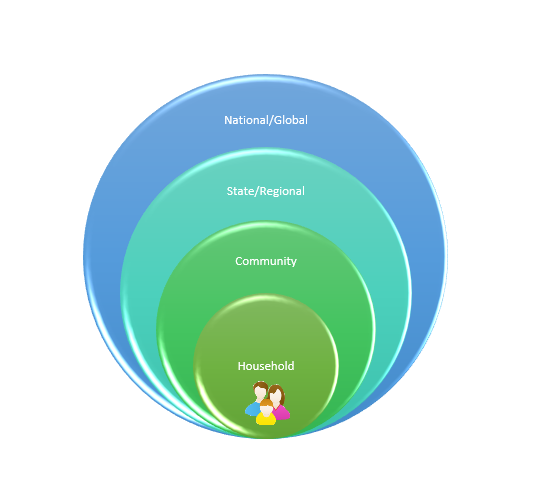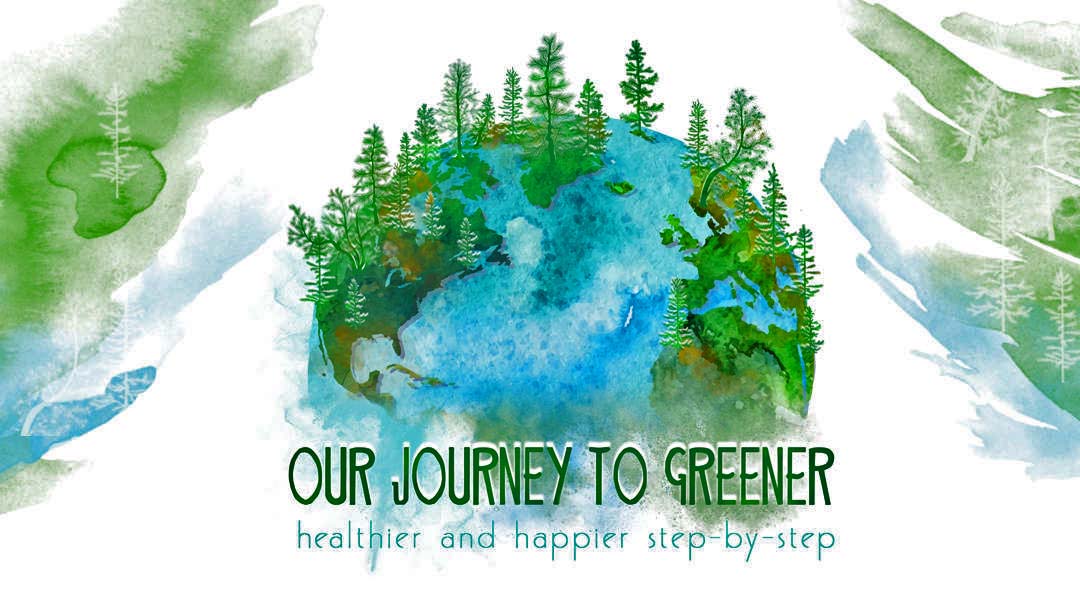The environmental problems our world faces are often overwhelming and difficult to discuss. We’ve found it helpful to break the conversation down into degrees of interaction and impact. We do this to take a complex topic and hopefully connect the dots. Creation Care, being Green, Environmental Care, Social Justice, etc… are all terms used to talk about activities to improve the World we live in. No one person can address all of them. But every person can address some of them.
Throughout our blog, you’ll see discussion on each of the Degrees of Green. Below are definitions of these Degrees that we’ll use to connect the layers.

We start with you and your family. You are the center of the circle. This is where you have the most control, can set goals and determine your personal journey to greener.
Household Activities – will have the most immediate and obvious impact on your family’s health and possibly finances. This sphere includes but is not limited to how you eat, what you expose your family to in your home, and your purchasing habits. There is a ripple effect out to the larger spheres.
Community – Where you model the personal choices you make and start giving back. Living green does show – how you order your coffee, how you organize your errands, the extra effort to pick up litter all communicate what a green lifestyle looks like to your family, friends, and strangers in the grocery checkout line. Broader than household choices you control AND model, Community level green is also about local services available and activities you can participate in. Examples of the Community Degree are recycling services, community gardens, park maintenance and improvement, and clothing drives. What types of activities can you participate in within your local community to be greener? Again, impacts at the community degree have a ripple effect to the larger spheres.
State/ Regional – State and regional scale issues are where green values and biology meet politics. Land use decisions by local government, state and federal rare species management, surface and groundwater pollution, transportation choices all meet up with societal values about Creation, our ability to live green(er), who benefits, and who pays for the provision of green(er) services provided by local, regional or state governments. Your state or region will have areas of priority based on the challenges experienced with demographics, industry and geography. As an example, water quality is a huge concern in the Puget Sound area. Pollution caused by storm water run-off and flooding caused by clogged storm drains are both a focus for regional governments. We have choices to make about how informed we want to be on these issues, how we vote for representation on these issues, and how we have conversations with those that hold opposing values.
National/Global – This large sphere is where we see impacts that affect not only our immediate area, but the entire world. Much of what we see locally is a symptom of larger issues such as unequal use of resources such as oil, water, forests and minerals. Issues such as global declines of species, plastic pollution of oceans, inequality in social justice and, more positively, what other countries are doing to address global problems are examples of the national/global scale degree of green(er).
There are no easy answers in being green. We’re not going to “fix” the messes humanity has created overnight. Each of us can, however, do our little part and live with an intentional effort to impact our family, community, region and world in a positive way.

No Comments